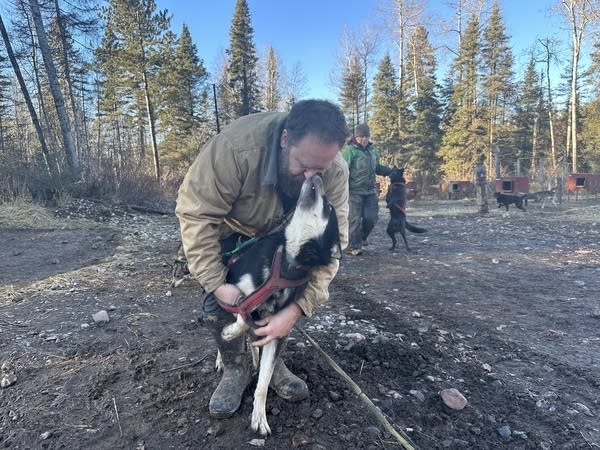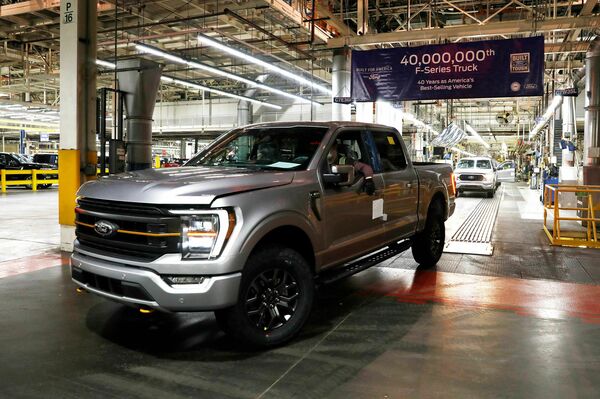Deep in the north woods, about 30 miles outside Ely, Peter McClelland runs White Wilderness Sled Dog Adventures.
This year, “it’s more like mud wilderness right now,” McClelland said, gesturing toward his 100 sled dogs tied up in the muddy dog yard, itching to run.
“Normally, we’d have 15 sleds going out a day, every day, this time of year,” McClelland said. “Right now, we have none.”
The holidays are usually his busiest time. This year McClelland, who’s guided sled dog trips for nearly 30 years, has been forced to cancel all scheduled trips through at least Jan. 7. He’s offering discounts to customers who postpone until next season, because he doesn’t have enough cash to refund all their deposits.
He still has to pay for dog food, and vet bills, and to exercise his animals. But instead of hitching them to a sled, he ties up a 14-dog team in front of an ATV and takes them on long exercise runs up to 16 miles on forest roads.
“Running a sled dog business like this is a labor of love. You do it because you want to. It’s great to share this with with the guests that come up. But you do not make enough money to really be able to weather this kind of disaster.”
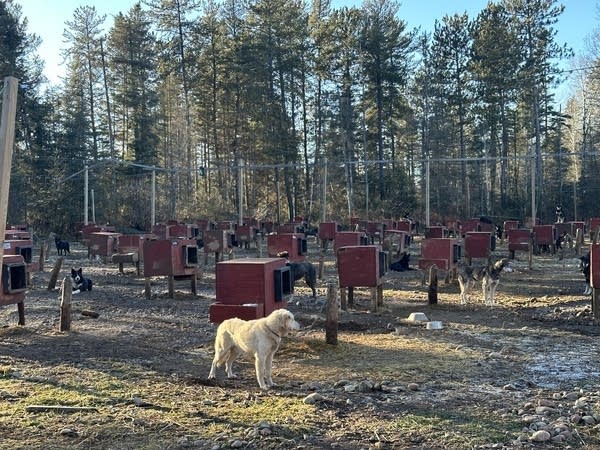
McClelland isn’t alone. Elsewhere across northern Minnesota, small business owners who rely on ice anglers, snowmobilers, skiers and other outdoor winter enthusiasts have also struggled through a historically warm and rainy December.
“There are people who will exclaim ‘Oh, I love this, it’s mild, my heating bill is so much lower.’ Those are all definite victories that you might experience,” said Kenny Blumenfeld, senior climatologist with the Minnesota Department of Natural Resources.
“But we have so much recreation and commerce tied up on the expectation that it’s gonna get cold and it’s gonna get snowy. We also have our whole ecosystem dependent on that. So it’s a big shock to the system when you’re neither cold nor snowy for this long.”
‘Really hurting us’
McClelland’s sled dog business, tucked in the Superior National Forest between Ely and the North Shore of Lake Superior, sits in the snowiest part of Minnesota. The area is often buried in 100 inches or more over the course of a winter.
This year, there’s been barely a dusting. On a late afternoon last week, the Knotted Pine bar in Isabella sat empty. Normally this time of year it’s packed with snowmobilers.
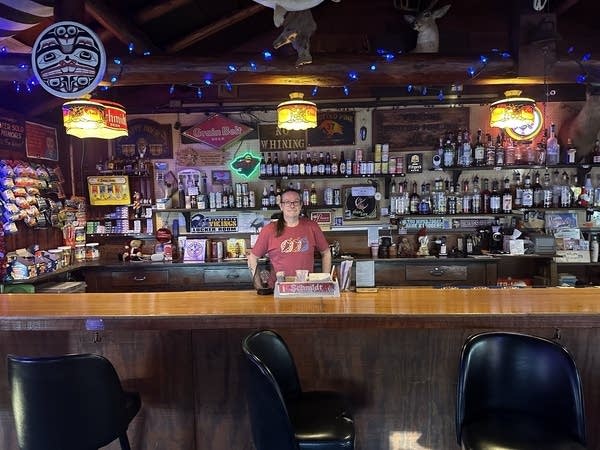
“I’ve been up here in the winter for basically the last 20 years,” said bartender Chris Dorman. “This is the first time I’ve seen no snow at all.”
And looking ahead at the forecast, he said he’s not optimistic.
“We might get through January without any snowmobile business. And we rely heavily on it here. We’ve got multiple cabins that we rent out. And none of them are rented right now. Because these guys don’t have anywhere to ride.”
It’s a similar story down the road in Finland, where a colorful mural featuring a snowmobiler is painted on the wall of the Finland co-op.
“This year is unbelievable. We’ve got no snow. It’s been raining. And it is really hurting us,” said Bob Buus, who runs Our Place bar and restaurant with his wife Dianne. The four cabins they rent are also empty. They trimmed opening to just five days a week to save money.
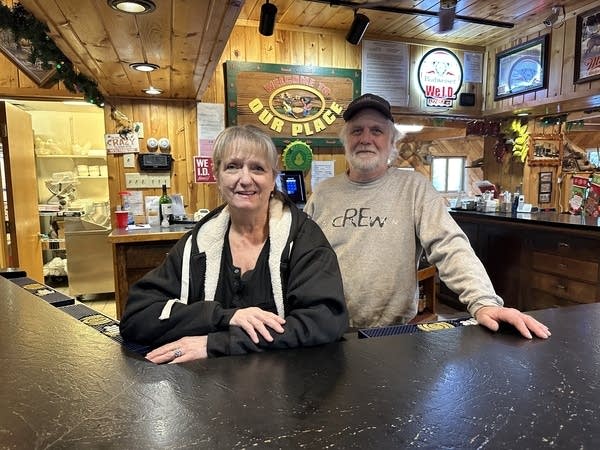
“It’s getting pretty deep in our pockets. And, you know, getting deep into money that was put aside for retirement,” said Buus, who is 65.
"We’ve prayed a lot,” added Diane Buss.
Warm weather hinders snowmaking for skiers, ice for skaters
Low snow years aren’t unheard of in northern Minnesota. What’s different this year is how uncommonly warm it’s been. That’s had an impact on downhill and cross country ski facilities that make artificial snow to supplement the natural stuff.
“In fact, lack of snow is really not a big issue for us, because we make most of our own snow,” said Ann Glumac, executive director of Duluth’s Spirit Mountain, which makes snow both for downhill and Nordic skiing.
“What we have suffered through is warm weather,” she said.
“We need to have temps in the mid 20s or lower to make snow, and the lower it is the better the snowmaking. And then the rain we’ve had has combined to make it a challenge to put snow on the hill and keep it on the hill.”
Warm temperatures have also put a damper on youth hockey. In Duluth, younger children play a majority of their games at outdoor neighborhood rinks, where parents brave typically frigid temperatures overnight to flood rinks with firehoses.
But it’s been too warm to flood many rinks so far this winter.
“I’m sad,” confessed 8-year-old Felix Johnson, who has played hockey at Portman Park in Duluth’s Lakeside neighborhood since he was a preschooler.
“We live pretty close to here and I like to come here and skate, but we can’t because of the warm weather,” Johnson said.
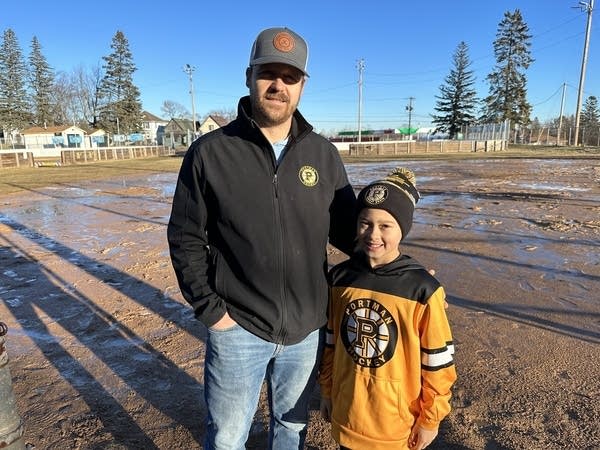
The Portman Youth Hockey Association had to cancel a fundraiser and postpone a jamboree that was scheduled for this weekend.
That stands in stark contrast to two years ago, when the club had to shorten the tournament because of subzero temperatures.
“It was single digits on Saturday, but that was better than nothing, so we had to jam everything into one day,” said Felix’s dad, Keith Johnson. “So this is just amazing to see the difference from year to year.”
Record-setting winter
December was Minnesota’s warmest and wettest on record, dating back to 1895. Temperatures were 10 to 15 degrees above average across the state. Moisture fell as record-setting rain. Nearly the entire state was snow-free on Christmas day.
“We’re experiencing a truly great — and I don’t mean, necessarily good — but a truly extraordinary climate event,” said Blumenfeld.
Blumenfeld said the surreal weather this year is driven largely by an intense El Nino event, which is a warming of the Pacific Ocean near the equator.
But he said that’s layered on top of already significantly warmer winters over the past several decades fueled by human-caused climate change. For example, the average January low in International Falls is now about 10 degrees warmer than it was in the mid 1900s.
“So one way of looking at this, to kind of put it all together, is that the way that the climate has changed puts us in a position where we are able to break records more easily because baseline conditions are much warmer than they used to be,” Blumenfeld explained.
“So I would say that the warmth we're experiencing this winter is mostly El Nino, on top of a fairly dramatically changed climate.”
Those long-term trends have McClelland concerned that he may not have a viable sled dog business to pass on to his children.
“Right now we have to make all our money in three months,” he said. “If that gets down to two months, and every few years, you lose one of those two months, how are you going to be able to keep it going?”



